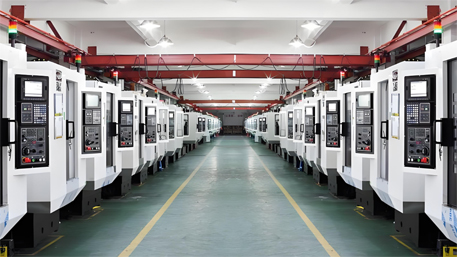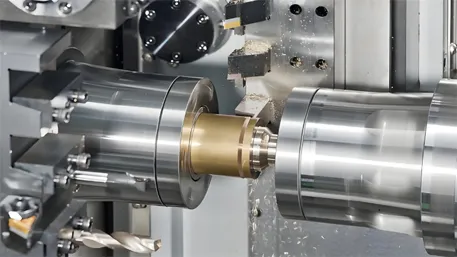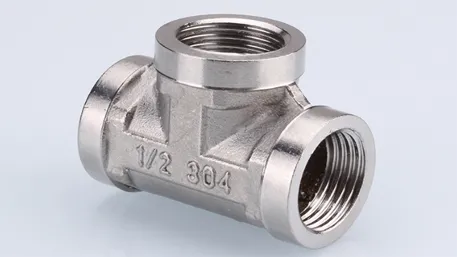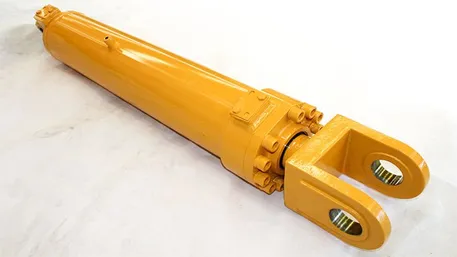In the era of deep integration of digital technology and intelligent manufacturing, CNC (Computer Numerical Control) technology has become the core force reshaping the global industrial landscape. From the micron – level processing of mobile phone touchscreens to the composite material molding in the aerospace field, CNC equipment, with its high – precision and high – flexibility characteristics, continuously promotes the manufacturing industry towards high – end and intelligent development. This article will analyze the multi – dimensional breakthroughs of CNC technology in application scenarios, technological upgrades, and industrial ecosystems in combination with the latest industry trends.

I. The “Micro – revolution” of Precision Manufacturing: Full – Scenario Penetration from Consumer Electronics to Aerospace
In the field of the electronic information industry, the precision of CNC engraving machines has reached the 0.01mm level, making them key equipment for the production of precision components such as mobile phone touchscreens and camera modules. For example, Changzhi Shengda Intelligent Technology produces 70 million optical displays annually through 20 CNC devices, with 90% of its products exported overseas. The processing precision and efficiency directly determine the quality competitiveness of end – products. Similarly, Jiangxi Tianying CNC Equipment provides 3 – 5 – axis CNC machine tools for the supply chains of BYD and Huawei. With the technical advantage of error control within 0.01mm, it further consolidates China’s leading position in the 3C manufacturing field.
This trend of precision is not only reflected in the consumer electronics field. In the aerospace field, the combination of CNC and laser cutting technology is giving rise to a new manufacturing paradigm. The low – altitude industrial cluster in Gaobeidian, Hebei, through the “shared intelligent manufacturing” model, uses CNC equipment to process carbon – fiber composite aircraft shells, achieving full – process collaboration from cutting to assembly. This not only reduces the technical threshold for small and medium – sized enterprises but also promotes regional industrial upgrading.
Industry Insights: Precision processing capabilities have become the core barrier in the global industrial chain competition. With the maturity of 3D printing technology, CNC processing is transforming from “subtractive manufacturing” to “additive + subtractive” composite manufacturing to meet the manufacturing requirements of complex surfaces and lightweight structures.
II. Technological Iteration in the Wave of Intelligence: AI Reconstructs the “Brain” of Equipment and Production Logic
The deep integration of AI and the Industrial Internet of Things (IIoT) is reconstructing the “brain” of CNC equipment. The FANUC 0i – F Plus STEP2 numerical control system launched by Beijing FANUC optimizes the processing path through machine learning algorithms, increasing equipment utilization by more than 30%. At the same time, the application of digital twin technology realizes seamless connection from virtual design to physical production. For example, the CNC loading and unloading solution of Han’s Robot controls the repeat positioning accuracy within ±0.02mm through multi – equipment linkage, significantly improving factory automation efficiency.
At the supply chain management level, AI prediction models are alleviating the pain points of traditional CNC manufacturing. By analyzing data such as historical orders and raw material prices, enterprises can dynamically adjust production plans to reduce the risk of inventory backlogs or shortages. This intelligent upgrade not only improves the efficiency of a single device but also promotes the optimization of the entire manufacturing system.
Technological Breakthroughs: Real – time compensation technologies (such as thermal error compensation and vibration suppression algorithms) enable CNC equipment to maintain stable accuracy under complex working conditions, and the application of 5G edge computing realizes remote equipment operation and maintenance and dynamic adjustment of production lines.
III. Green Manufacturing and Sustainable Development: From “Energy – Intensive” to a Benchmark of Low – Carbon Manufacturing
With the improvement of environmental protection requirements, CNC technology is transforming from “high – energy – consuming” to “low – carbon”. The on – line cutting fluid recovery system developed by Shenzhen Ruigesheng Company achieves a 95% waste liquid recycling rate through physical and chemical treatment technologies, while reducing carbon emissions by 60%. This technology was selected into the national “Green Technology Promotion Catalog”, marking a breakthrough in CNC manufacturing towards a three – coordinated model of “waste reduction, emission reduction, and carbon reduction”.
In addition, the green trend in equipment design itself is becoming more and more obvious. The new Daoxianghu Park of Beijing FANUC adopts technologies such as solar power supply and intelligent temperature control, reducing the energy consumption per unit product by 40%. This all – round green transformation from process optimization to the production environment is reshaping the industry’s competition standards.
Policy – Driven: Policies such as the EU’s “New Battery Law” and China’s “Dual – Carbon” goal are forcing enterprises to accelerate technological innovation. Low – carbon CNC equipment will become the “green pass” to enter the international market.
IV. The Co – evolutionary Industrial Ecosystem: Cluster Effects and Global Layout
The development of CNC technology is inseparable from the synergistic effects of industrial clusters. The Digital and Intelligent Interconnected Industrial Park in Lucheng, Shanxi, through “nanny – style services” and policy support, has attracted the gathering of more than 20 electronic information enterprises, forming a complete industrial chain from chips to end – products. Quxian, Sichuan, through the “3 + N” industrial layout, relies on enterprises such as Wangxin Electronics to build a complete industrial chain for laptop computers and intelligent equipment, achieving a 200% increase in production capacity while reducing labor costs by 60%.
In the global competition, Chinese CNC enterprises are accelerating technological breakthroughs and market layouts. The sales volume of Beijing FANUC’s numerical control system has exceeded one million units, covering fields such as automobiles and new energy; Han’s Robot launched a 30KG – load palletizing solution in the North American market, marking that China’s high – end equipment has started to participate in the global high – end market competition. At the same time, the rise of emerging markets such as Vietnam and Saudi Arabia provides new growth poles for the CNC industry, promoting the formation of a multi – polar global industrial pattern.
Market Trends: In 2024, the global CNC machine tool market size exceeded 60 billion US dollars. China leads with a 32% share, and Southeast Asian countries such as Vietnam and India have a growth rate of over 9%, becoming important destinations for industrial transfer.
V. Future Outlook: From “Manufacturing Tools” to “Ecosystem Hubs”
With the maturity of technologies such as AI and digital twins, CNC equipment will evolve from simple processing tools to the core nodes of intelligent manufacturing. In the future, its development will show three trends:
The Ultimization of Precision and Flexibility: Nanometer – level processing technology will meet the needs of high – tech fields such as semiconductors and healthcare, and modular design enables the equipment to quickly switch processing tasks.
Full – Domain Intelligence: AI quality inspection systems analyze processing data in real – time and predict equipment failures; blockchain technology realizes supply chain traceability and improves production transparency.
Open Ecosystem Construction: Through API interfaces, it collaborates with third – party software to form a cross – industry intelligent manufacturing ecosystem, such as the deep integration of CNC equipment and industrial Internet platforms.
At the policy level, China’s “14th Five – Year Plan” continues to increase support for high – end equipment. Coupled with the opportunities of global industrial chain restructuring, the CNC industry is expected to form a market size of over 85 billion US dollars by 2030. The core competitiveness of enterprises will not only be reflected in equipment performance but also in the integration ability of data, algorithms, and ecosystems.
Conclusion:
The evolution history of CNC technology is essentially a microcosm of humanity’s pursuit of manufacturing precision and efficiency. From micron – level meticulous carving to intelligent ecosystem construction, this technology is redefining the connotation of the “mother machine of industry”. In the waves of greening and digitalization, the future of the CNC industry not only concerns equipment upgrades but will also profoundly affect the division of labor and competitiveness pattern of the global manufacturing industry. Only by taking innovation as the driving force and collaboration as the link can we seize the opportunity in this technological revolution and lead the industry towards a higher – order intelligent manufacturing era.






